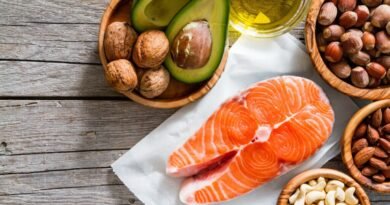Eric S. Youngstrom, CEO, Onramp Funds
Eric S. Youngstrom is founder and CEO of Austin-based Onramp Funds, an innovative funding provider that supports the growth of eCommerce businesses. Youngstrom leads a team steeped in eCommerce, providing financing and other resources to empower online merchants to scale their businesses and achieve their dreams. Here he discusses how natural product retailers can make the most of their online presence.
Question: How can a health food store retailer optimize their website?
Answer: To optimize a health food store website, it’s essential to focus on user experience, product discovery and conversion optimization. User experience starts with ensuring fast load times, mobile responsiveness, and intuitive navigation. For example, Vitamin Shoppe makes it easy for customers to find products that align with their health preferences by offering category filters like “Vegan,” “Gluten Free,” and “Non-GMO.” This helps customers quickly narrow down choices based on their dietary needs.
Product discovery can be enhanced through advanced search functionality with predictive text and personalized recommendations. Thrive Market excels in this area by suggesting products tailored to customers’ browsing history and dietary preferences, making the shopping experience feel more curated and personal. Conversion optimization involves adding clear calls-to-action, showcasing customer reviews and including trust badges. Highlighting subscription options for supplements not only enhances convenience for customers but also establishes recurring revenue streams for the retailer.
Question: What do you like to see on a retailer’s website? What should retailers avoid?
Answer: A well-designed retailer website should feature high-quality product images, detailed descriptions with ingredient transparency and educational content such as blogs and videos to build trust with consumers. iHerb, for instance, includes extensive customer reviews, comprehensive ingredient lists, and usage tips on their product pages, providing shoppers with the information they need to make informed decisions.
On the other hand, retailers should avoid cluttered layouts, hidden shipping costs or overly complicated checkout processes, as these can frustrate customers and lead to abandoned carts. Generic content should also be avoided; health-conscious consumers value authenticity and transparency. Inconsistent branding across different pages can dilute a retailer’s credibility and confuse customers.
Question: How is a health food store/natural grocery store website different from other retailers?
Answer: Health food store websites cater to a highly informed, health-conscious audience, which makes them distinct from other retail sites. These websites prioritize ingredient transparency, providing detailed product information, sourcing practices, and certifications, such as USDA Organic and Non-GMO Project Verified. Personalization is another key differentiator, with tools that allow customers to filter products based on dietary preferences like keto, paleo or vegan, as well as health goals, such as immunity support, digestive health or increased energy. Additionally, educational resources are more prominent on health food websites. Unlike general retailers, health food stores often include blogs, webinars and expert Q&A sections. Natural Grocers, for example, integrates wellness articles that complement their product recommendations, helping to educate customers and foster brand loyalty.
Question: How can retailers connect social platforms, websites and brick-and-mortar?
Answer: Retailers can create a seamless connection between social platforms, websites, and brick-and-mortar stores through unified branding, social commerce and omnichannel loyalty programs. Consistent messaging and visuals across social media, websites, and physical stores help reinforce brand identity. Social commerce tools, such as the fast-growing TikTok Shop, can drive traffic directly to eCommerce sites. Retailers can also showcase in-store events or new product arrivals on platforms like TikTok to engage younger audiences and create buzz. Omnichannel loyalty programs are particularly effective in bridging the gap between online and offline experiences. For instance, Sprouts Farmers Market offers a mobile app that integrates digital coupons and loyalty rewards, allowing customers to earn and redeem points both in-store and online seamlessly. For some retailers, developing their own mobile app may be too cost prohibitive, but a mobile-friendly rewards and loyalty program is easy to implement.
Question: Who should consider eCommerce? What are the factors to consider? When is it worth it, or not?
Answer: eCommerce is worth considering for any retailer looking to expand their customer base beyond their local community. It is especially valuable for niche health products with dedicated followings. Key factors to consider when evaluating eCommerce potential include customer demand, logistical capabilities and financial readiness. Retailers should assess whether there is a clear demand for online shopping options among their customers. They should also consider whether they can manage the logistics of shipping perishable or fragile items efficiently. Financial readiness is crucial, as launching an eCommerce platform requires investment in website development, marketing and inventory management. Flexible funding options, such as short-term capital injections, can be beneficial. These funding solutions support growth without the burden of long-term debt commitments.
eCommerce is worth the investment if a retailer offers unique products, has strong brand recognition, or can fulfill orders efficiently. Conversely, it may not be the right fit if the products are highly localized, rely heavily on in-person experiences, or if the costs of fulfillment outweigh the potential profits. While eCommerce is not a one-size-fits-all solution, with the right strategy and resources, it can be a powerful channel for growth.
www.onrampfunds.com



